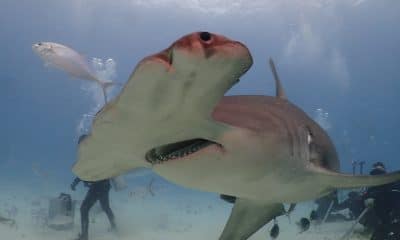News
Enter Monthly Underwater Photography Competitions with Wrecks of the World
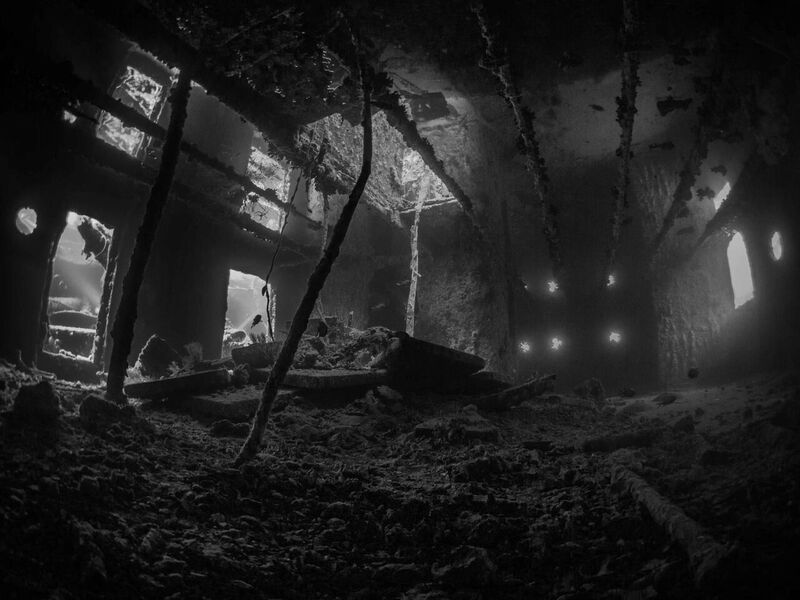
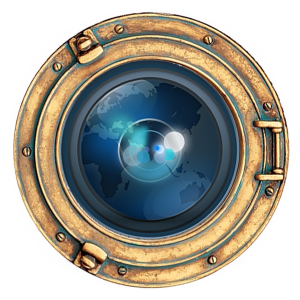 Wrecks of the World is one of the most inspiring underwater photography groups in the global diving community. The Facebook group was founded by Christian Llewellyn after he went on a liveaboard trip in the Red Sea.
Wrecks of the World is one of the most inspiring underwater photography groups in the global diving community. The Facebook group was founded by Christian Llewellyn after he went on a liveaboard trip in the Red Sea.
“Since my first wreck dive in Barbados on a Greek freighter named the Stavronikita, I was hooked on these amazing objects found under the sea,” said Christian. “I was left with so many questions – how did they get there? Who was the crew? What was the cargo? How long had they been there? So much history, mystery and adventure, which really inspired my diving career.”
“When we started I had already joined a few photography groups but I thought it would be great to create a Wreck photography group where people could engage in sharing healthy and productive conversations, posting their images in a safe environment, providing information for others, travel info, marine life found on wrecks, the history and any skills or equipment needed or used to capture wreck images, which has resulted in truly improving people’s photography and diving.”
Christian says that as divers and underwater photographers we are guests in a fragile underwater world and we must not tamper so others can enjoy them in the future. We must always remember marine and Wreck conservation is our own duty to follow.
In the near future Christian will be starting a new Wrecks of the World t-shirt line, a website with wreck directory, expedition trips to visit wrecks of the world, and at the end of the summer season there will be a splash in competition weekend in Malta, where you can dive some amazing wrecks in the perfect clarity of the Mediterranean sea. While on land you can enjoy the local scenery, cuisine and hospitality of all the local Maltese dive centres and businesses.
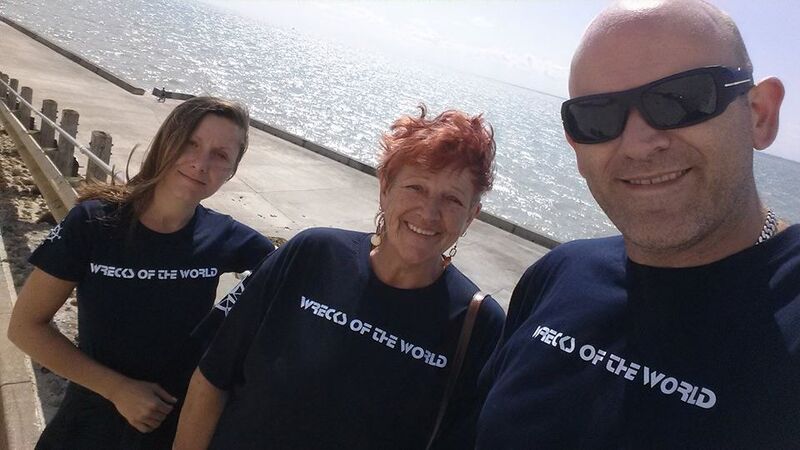
Wrecks Of The World Photo Championship 2017
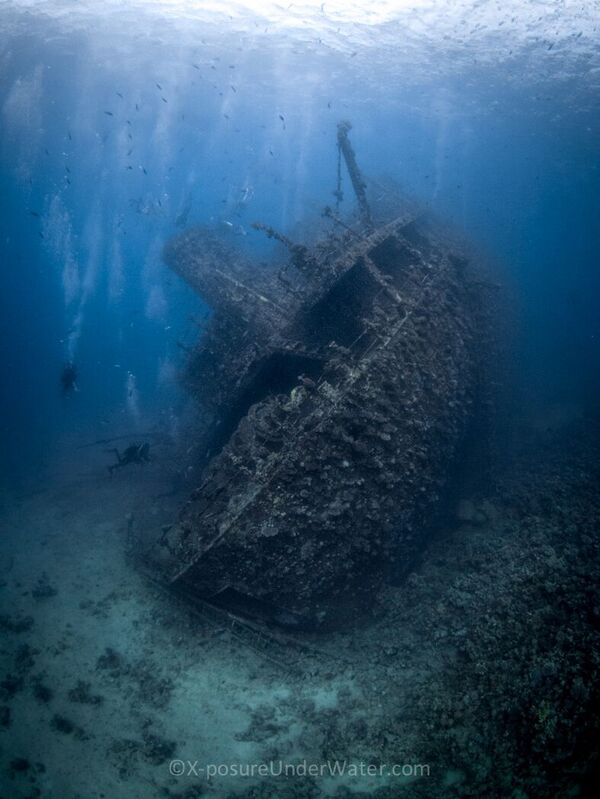 Monthly competitions are open to all members of the Wrecks Of The World wreck photography group on Facebook. Whether you are an amateur photographer or a seasoned professional, all members are welcome to enter the competitions, and it is OK if you use a compact camera, a GoPro, a DLSR or a mirrorless camera system. Everyone who enters has the chance to win an amazing Wrecks of the World T-shirt in their choice of colour.
Monthly competitions are open to all members of the Wrecks Of The World wreck photography group on Facebook. Whether you are an amateur photographer or a seasoned professional, all members are welcome to enter the competitions, and it is OK if you use a compact camera, a GoPro, a DLSR or a mirrorless camera system. Everyone who enters has the chance to win an amazing Wrecks of the World T-shirt in their choice of colour.
So hunt through your hard drive and find your best photographs using a model whilst wreck diving and post it on this month’s event wall, where you will find all the information, rules, prizes, the Wrecks of the World competition table plus nearly four thousand like-minded people from around the globe who simply love wrecks.
Also remember that every competition throughout the year will work on a point system, which concludes at the end of the year with a special live online ceremony with the highest scoring member being crowned the Wrecks Of The World Champion of the year, receiving a special mystery grand prize. You can watch the Wrecks of the World 2016 Championship Ceremony movie at the end of this article.
April’s theme: “Wreck modelling”
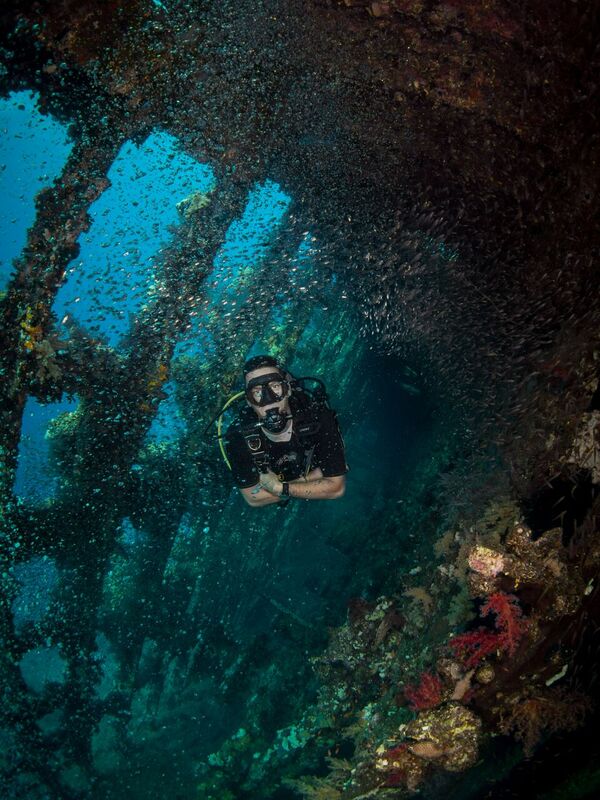 Capturing a diver as a model can help or actually detract your photograph. There is a subtle balance needed to compliment the two focal points simultaneously, which should result in a seamless well-balanced image. From a simple photograph of a diver which lets the viewer gaze at the shear scale of a wreck, to a well planned complex narrative being produced through the combination of an interesting angle, use of leading lines, colour, lighting and contrast.
Capturing a diver as a model can help or actually detract your photograph. There is a subtle balance needed to compliment the two focal points simultaneously, which should result in a seamless well-balanced image. From a simple photograph of a diver which lets the viewer gaze at the shear scale of a wreck, to a well planned complex narrative being produced through the combination of an interesting angle, use of leading lines, colour, lighting and contrast.
All should show a diver having a passive interaction with a wreck.
The judges will be looking for your photograph to show use of a model, which compliments the environment and a visitor admiring it. A photograph that might inspire divers to try wreck diving for the first time or to make non-divers want to engage with the image, it’s history and possibly left wondering what it would be like to visit one of these time capsules.
Wrecks of the World Links:
Wrecks Of The World photography group
Here’s the Wrecks of the World 2016 Championship Ceremony movie:
Blogs
Heading out on the water this Summer? Watch for manatees
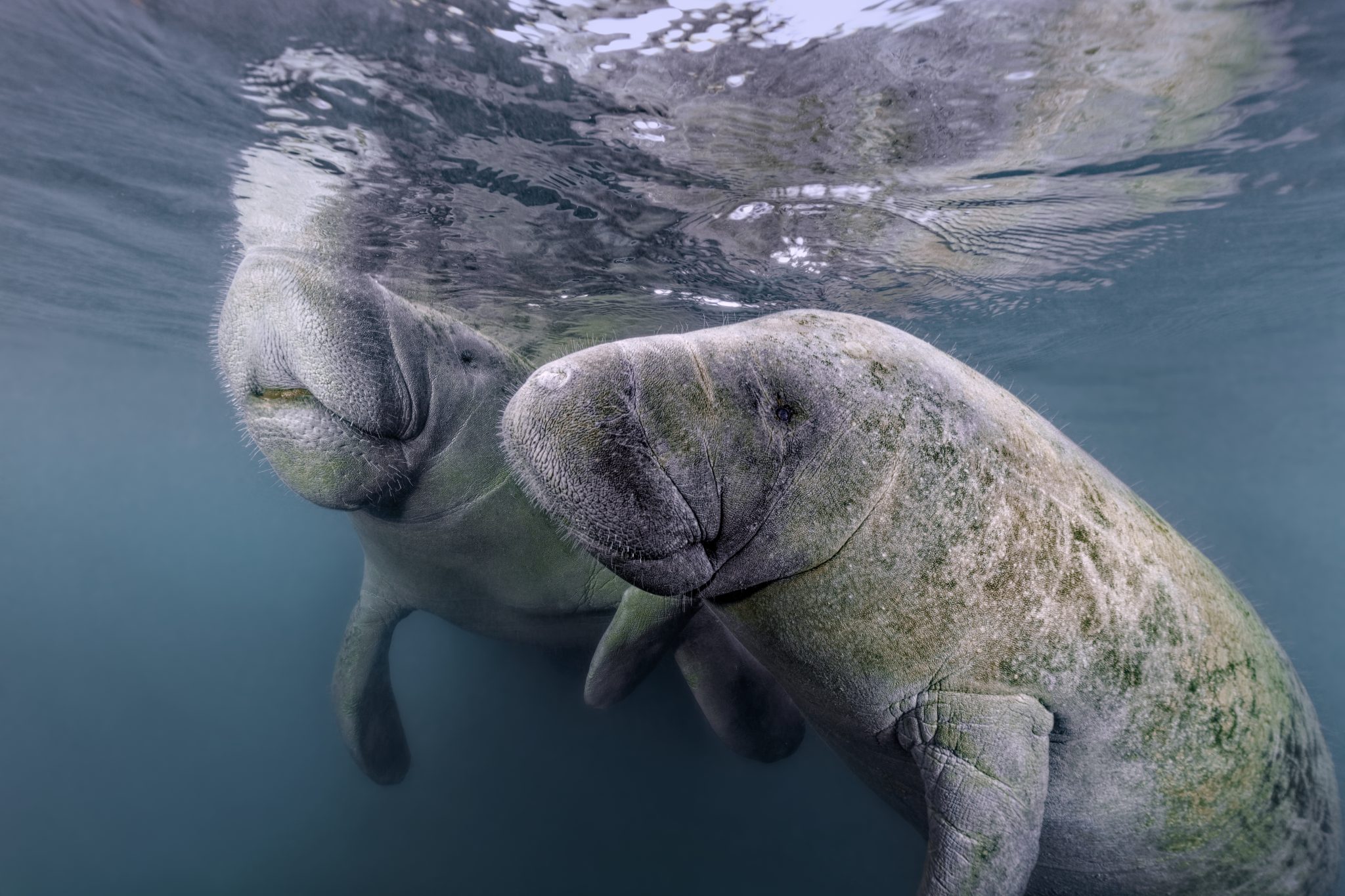
As National Safe Boating Week approaches, Save the Manatee® Club is urging boaters, and anyone that enjoys Florida’s waterways, to respect and protect the defenseless manatees that inhabit our shared waterways. From May 18 to 24, leading up to Memorial Day Weekend, the campaign aims to raise awareness about recreational boating safety and the importance of safeguarding imperiled manatees during the summer boating season. This week also emphasizes the importance of encouraging boaters to enroll in a boating safety course.
Manatees are semi-migratory marine mammals that are commonly found in shallow estuaries, bays, rivers, canals, and coastal areas throughout Florida and neighboring states. With some manatees venturing as far west as Texas and as far north as Massachusetts, collisions between these gentle giants and watercraft have become distressingly frequent. Boat propellers and high-speed collisions pose significant threats to manatees, often resulting in severe injuries or even death.
Save the Manatee Club is calling on all water enthusiasts to follow essential manatee safety tips to ensure the well-being of the imperiled manatee:
- Obey Speed Zone Signs: Familiarize yourself with and adhere to posted speed limits to prevent collisions with manatees.
- Reduce Glare with Polarized Sunglasses: Wear polarized sunglasses to enhance visibility and spot manatees below the water’s surface.
- Recognize Manatee Signs: Learn to identify signs of manatees in the area, such as swirls or flat spots on the water caused by their movements.
- Respect Manatee Sanctuaries: Keep a safe distance from posted manatee sanctuaries and avoid pursuing or harassing these marine mammals, as it is illegal and can disrupt their natural behaviors.
- Report Distressed Manatees: In Florida, promptly report distressed, injured, tagged, or orphaned manatees to the Florida Fish and Wildlife Conservation Commission (FWC) at 1-888-404-FWCC (3922). Outside of Florida, report sightings to the appropriate state agency or rescue organization. A list of agencies to contact is available at savethemanatee.org/report.
- Protect Seagrass Beds: Avoid boating over seagrass beds and shallow areas where manatees may be feeding. Stick to deep water channels while remaining vigilant, as manatees also utilize these channels during their travels.
- Dispose of Fishing Line Responsibly: Anglers should properly dispose of or recycle used fishing line to prevent entanglement hazards for manatees.
“Each year, National Safe Boating Week provides an excellent reminder for all of us to be aware that we share our waterways with vulnerable manatees,” emphasized Patrick Rose, Aquatic Biologist and Executive Director of Save the Manatee Club. “With the recent Unusual Mortality Event on Florida’s East Coast claiming an alarming number of manatees’ lives, it is more crucial than ever to prevent preventable deaths caused by watercraft collisions. By following manatee-safe boating guidelines, such as obeying speed zones and remaining vigilant for manatees, everyone on the water can contribute to the protection of these gentle giants.”
Save the Manatee Club offers a range of free materials to help safeguard manatees and raise awareness about manatee-safe boating practices. Shoreline property owners and park or marina managers can order aluminum dock signs to alert others about the presence of manatees in their areas. Boaters and paddlers can request packets containing a safety tips card, a waterproof boat banner, and a decal to display on their vessels, providing the number to report manatees in distress. To view and request these materials, visit savethemanatee.org/resources. Save the Manatee Club will also be hosting a live webinar for National Safe Boating Week on Tuesday, May 21st at 6pm EST. To register, visit savethemanatee.org/register.
Marine Life & Conservation Blogs
Book Review: Shells of the World

Shells of the World: A Natural History by M.G. Harasewych
Shells of the world is a guide to the world of marine, shelled molluscs. And what a varied and interesting world it is. Some of my favourite things to find on a dive are detailed in this book, including disco clams (or Electric File Clams as they are correctly names), the cephalopods, giant clams and sea hares. There are also many on my wish list, top of which is the Nautilus.
Each chapter provides a detailed description of the species, along with beautiful images. You can dive deeper and discover where they live, both with global distribution and the habitat they prefer. Learn about their diet, reproduction and diversity.
Having dipped in and out of this lovely book over the past few weeks, it has inspired me to learn more about this group of animals that we see on most divers, wherever we are in the world. Some of the shells are incredibly intricate and beautiful. I have always agreed with never collecting, or touching, marine life. The description of a certain set of cone shells should be a warning to those that are happy to pick up marine life! One of the cone shells has a local name called the cigarette snail. Why? Because once the venom is in your system from this animal, you only have time to smoke one cigarette before the affects of the venom are fatal!
What the publisher says:
Mollusks are invertebrate animals with a remarkable natural history and a rich fossil record, and their shells are prized for their breathtaking variety and exquisite beauty. Shells of the World provides a wide-ranging look at the incredible diversity of marine mollusks. An informative introduction outlines the lineages covered, followed by a directory section, split into classes, that profiles a broad selection of different taxa to give a sense of their sheer numbers and variety.
- Features hundreds of beautiful color photos, depicting both the live animals and their shells
- Discusses mollusk evolution, anatomy, life cycles, behavior, and ecology
- Describes unique characteristics, distribution, habitat, and size
- Provides valuable insights into the conservation of the world’s marine mollusks
- Ideal for malacologists and shell collectors everywhere
About the Author:
M. G. Harasewych is research zoologist emeritus and former curator in the Department of Invertebrate Zoology at the Smithsonian Institution’s National Museum of Natural History. A fellow of the American Association for the Advancement of Science, he is the author (with Fabio Moretzsohn) of The Book of Shells: A Life-Size Guide to Identifying and Classifying Six Hundred Seashells.
Book Details
Publisher: Princeton University Press
Hardcover
Price: £25
ISBN: 9780691248271
Published: 9th April, 2024
-

 Marine Life & Conservation Blogs3 months ago
Marine Life & Conservation Blogs3 months agoCreature Feature: Swell Sharks
-

 Gear Reviews4 weeks ago
Gear Reviews4 weeks agoGEAR REVIEW – Revolutionising Diving Comfort: The Sharkskin T2 Chillproof Suit
-

 Blogs2 months ago
Blogs2 months agoMurex Resorts: Passport to Paradise!
-

 Blogs3 months ago
Blogs3 months agoDiver Discovering Whale Skeletons Beneath Ice Judged World’s Best Underwater Photograph
-

 News3 months ago
News3 months agoPADI Teams Up with Wellness Brand Neuro to Drive Ocean Change and Create a Blue State of Mind
-

 Gear Reviews3 months ago
Gear Reviews3 months agoGear Review: Oceanic+ Dive Housing for iPhone
-

 Marine Life & Conservation2 months ago
Marine Life & Conservation2 months agoSave the Manatee Club launches brand new webcams at Silver Springs State Park, Florida
-

 Blogs2 months ago
Blogs2 months agoSeagrass Awareness Month brings critical food source for Manatees to centre stage













